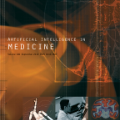The natural way of obtaining different perspectives on any given topic is by conducting a debate, where participants argue for and against the topic. Here, we propose a novel debate framework for understanding the classifier's reasoning for making a particular prediction by modelling it as a multiplayer sequential zero-sum game. The players aim to maximise their utilities by adjusting their arguments with respect to other players' counterarguments. The contrastive nature of our framework encourages players to put forward diverse arguments, picking up the reasoning trails missed by their opponents. Thus, our framework answers the question: why did the classifier make a certain prediction?, by allowing players to argue for and against the classifier's decision. In the proposed setup, given the question and the classifier's latent knowledge, both agents take turns in proposing arguments to support or contradict the classifier's decision; arguments here correspond to the selection of specific features from the discretised latent space of the continuous classifier. By the end of the debate, we collect sets of supportive and manipulative features, serving as an explanation depicting the internal reasoning of the classifier. We demonstrate our Visual Debates on the geometric SHAPE and MNIST datasets for subjective validation, followed by the high-resolution AFHQ dataset. For further investigation, our framework is available at \url{https://github.com/koriavinash1/VisualDebates}.
翻译:在任何特定议题上获得不同观点的自然方式是开展一场辩论,与会者争论和反对该议题。在这里,我们提议了一个新颖的辩论框架,以理解分类者作出特定预测的理由,将分类者的理由模拟为多玩者顺序零和游戏。玩家的目的是通过调整其他玩家的反论理来最大限度地提高自己的公用事业;我们框架的对比性质鼓励玩家提出不同的论点,并找出对手错过的推理线索。因此,我们的框架回答了以下问题:为什么分类者作出某种预测?允许玩家进行争论和反对分类者的决定。在拟议的设置中,考虑到问题和分类者潜在的知识,两种代理人都转而提出论据支持或反驳分类者的决定;这里的论点与从连续分类者离散的潜在空间中选择具体特征相对应。在辩论结束时,我们收集了支持和操纵性特征的组合,用来解释分类者的内部推理。我们展示了我们的视觉辩论,根据问题和分类者的潜在知识,在高分辨率的分辨率框架内,SHAPE/MISSA/ADRS。





